- Advertising
- Distribution
- Good Jibes Podcast
- Boat In Dining
- Sailboat Charters
- Business News
- Working Waterfront
- Youth Sailing


The Cult of the Cal 40
The classic 1960s ocean racing legend.
The Cal 40 is a roughly 39-ft 4-in fiberglass production racing and cruising sailboat, of which about 155 were built in Costa Mesa, California, starting in 1963. The first mass-produced sailboat that was capable of sustained surfing on waves, the Cal 40 dominated ocean racing during the 1960s like no other design before or since. It’s the original longboard, a Southern California surfing machine that is capable of sustained 15-knot downwind speeds.
The Boat That Changed Everything
This breakthrough design ushered in dramatic changes in offshore racing, from the moment that Cal 40 #2, Conquistador, won the 1964 Southern Ocean Racing Conference, the marquee big boat series at the time. “Wooden ships and iron men” had been replaced by fiberglass boats and kids, as Cal 40s, sometimes crewed by teams of teenagers, crushed the competition in the Bermuda Race, the Transpac and many others.
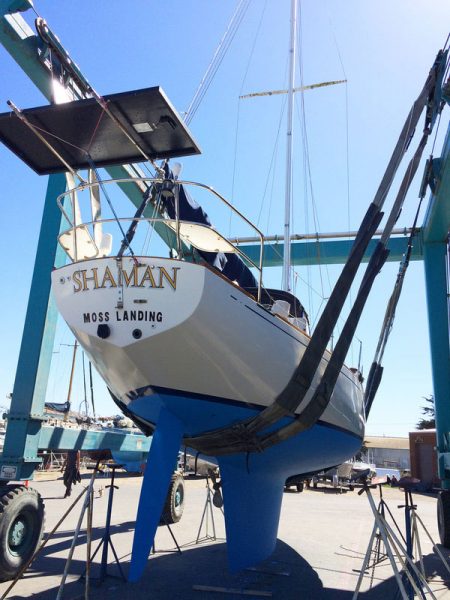
The Cal 40 was created as the combined work of three men. George Griffith, a successful racing sailor and member of the Los Angeles Yacht Club, reportedly drew the outline of a new kind of racing yacht hull on the back of a napkin, and showed it to his friend, naval architect C. William Lapworth. Griffith observed that sailing dinghies, like the International 14 class, were extremely maneuverable with their rudders hanging on their transoms, unlike the typical 40-footer of 1962, which was a full-keeled, heavy beast with the rudder swinging on the back of the keel.
Radical Ultralight Hull
Griffith’s sketch showed a flat-bottomed, radically ultralight hull, lithe and canoe-like in shape, but with a brutal, trapezoidal 6,000-pound wing stuck to the bottom. And behind this wing of a keel, way back, was a separate “spade” rudder. The design that Bill Lapworth created, at 15,000 pounds, was considered questionable, radically light and dangerously underbuilt by many of the yachting authorities, not to mention its being built out of the avant-garde new boatbuilding material of fiberglass, referred to as “extruded snot” by the esteemed L. Francis Herreshoff.
Griffith and Lapworth unsuccessfully shopped their design around to several California boatbuilders, experiencing polite rejection until they showed the plans to Jack Jensen, who agreed to build the boat on the condition that Griffith could guarantee orders for at least ten boats.
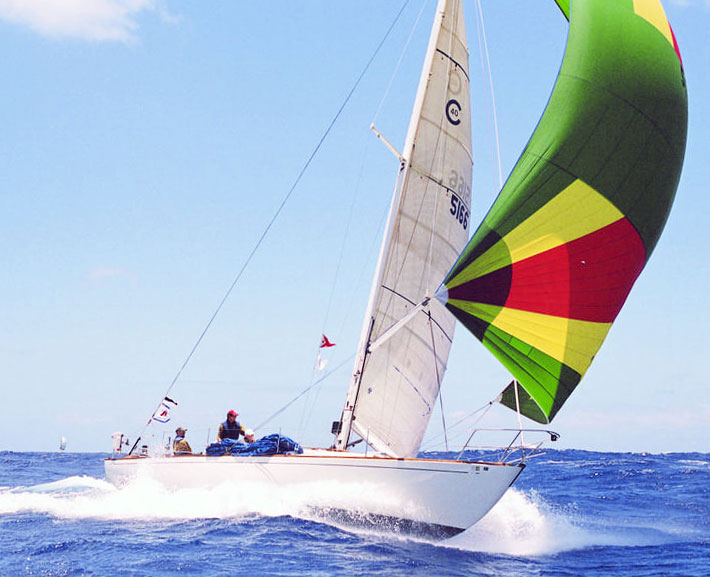
Fast forward to the present, and today the Cal 40 has attained true ‘cult’ status as a design that is sought after, restored and passed down through multiple generations of families. Try searching for Cal 40s that are for sale on Yachtworld and other sites, and you’ll likely come up empty. Folks spend multiple years and a quarter of a million dollars restoring Cal 40s and fitting them out with the latest sails, gear and electronics.
Standing the Test of Time
The Cal 40 has endured because it is not only a relatively quick downwind raceboat, but also a sweet-sailing light cruiser that, in the words of Cal 40 owner Stan Honey , “has no bad habits.” It steers beautifully under autopilot — plus it is rare to find a tiller-steered 40-ft sailboat, especially one with a light helm.
Cal 40s have twice achieved the record of being the biggest one-design fleet ever in the biennial Transpac Race, with 14 boats in 1966 and 2005. And the boat continues to rack up trophies in big ocean races too, as San Francisco Bay-based Cal 40s have continued to place well. Azure, Rodney Pimentel’s Encinal-based program, has been consistently near the top of the fleet in Bay, coastal and Pacific races. Green Buffalo and Red Head , from Richmond Yacht Club, have won at the top level. And no list of modern-era Cal 40 accomplishments is complete without mention of the husband/wife team of Stan Honey and Sally Lindsay Honey onboard Illusion .
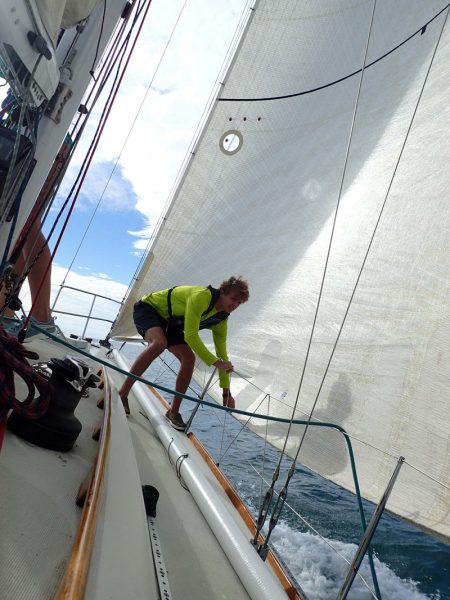
Many Cal 40 restorations are underway, or have happened recently. Fred Cook ’s complete down-to-bare-glass rebuild of Sequoia , documented in a great series of videos, is the most famous one. He’s worked with Cree Partridge, Jim Antrim, Kame Richards and other top East Bay pros to create a virtually brand-new boat.
A Swell Cal 40 Voyage
Perhaps the most well-known Cal 40 belongs to Liz Clark , who has been roaming the Pacific aboard Cal 40 #68, Swell . On what she calls, “a sailing surfer’s voyage of awakening,” Captain Clark has pushed the boundaries of solo cruising and sustainable living, all while attracting notice for her exciting adventures and sponsorship from the likes of Patagonia and North Sails. We have a copy of her excellent narrative, a book called Swell , onboard Shaman .
26 Comments
I own #120, ‘Mahalo’ and have since 2007. Yes, spent lots of $$ but she was in great shape after two Transpacs in ’03 and ’05 as ‘Flying Cloud’. She’s small by modern standards but just a blast to sail. I don’t race but I love to sail a boat well and a 40 is just a joy. She’s a great cruising boat now too.
First I would like to thank Latitude 38 for providing the magazine over the years but its especially great now when away from the water! I did the Transpac last year on Bob Hortons Cal 40 “Highlander” from Tiburon. What a great ride out there on the Pacific, I can vouch for the surfing which became competitive on the boat to see who who get the highest speed, I won by topping out at 18.9 knots on a wave at about 3-4 in the morning!, We could gauge how fast we were going by the noise of the water and how high water was spraying above the lifelines.
I like Cal 40s fine, but not the V drive most of them have.
I remember sailing with Jon Andron and his father Mort on their Cal 40 out of Santa Barbara in 1966-69. I was living aboard my boat GJOA in the SB harbor then. A fast boat ,but many “old school” sailors did not trust the FRP boats and I remember wondering if those boats would just fall apart while racing. How times changed.
We love the Cal40 here on Monterey Bay as well where we have a group of solo sailors we call “The Usual Suspects” who enjoy slugging it out on a regular basis. The Cal40 is extremely well suited for solo sailing/racing with it’s long tiller, accessible trim lines, and ability to easily steer with one’s foot while grinding in the jib after tacking. Just ask Steve Gann on his Cal40, Boomer, who (at 78 yrs young) still has enough tricks up his sleeve to teach us “youngsters” a thing or two!!!
Love Cal 40’s. Sailed in 81 and 85 on Montgomery Street in TransPac. We won it all in 85. The boat is like a freight train on rails downwind in a blow. I have many wonderful memories. I love it that Cal 40’s are still competitive 6 decades later.
How about running some of the old stories about the Cal-40. One such story that comes to mind was about Stan Honey doing the single-handed transpac in his Cal-40. Something about him beating the time of all previous Cal-40’s that had ever done the trip.
Splendid summary, thank you! It is extraordinarily impressive that almost 50 years later the Cal 40 remains an icon: a formidable racing boat that is also a sea-kindly and practical cruising boat without bad habits
It is, perhaps, worth remembering that the Cal 40 did not spring fully formed from George Griffith’s imagination onto that cocktail napkin. The same George Griffith had collaborated with the same Bill Lapworth on a prototype for the Cal 40 which was also built in Cost Mesa. This was the Lapworth 36. George Griffith took delivery of hull #1. It shared many of the same characteristics, and 71 boats were built to become a premiere one design fleet on the West Coast. It too, was radically ultralight by the standards of the day at less than 11,000 pounds. It shared the same rig and sail plan, and many of the same hull and under-body characteristics. The L-36 still had a keel hung rudder so it was the spade rudder that was the quantum leap on the Cal 40. Like the Cal 40, a well maintained Lapworth 36 remains a formidable racing boat as well as a sea-kindly and practical cruising boat without bad habits.
Full disclosure: my Father had #71 built. It is still in our family, and I expect my sons to be sailing her for many decades to come.
So additional articles must follow to describe the “cult” group of Cal 20s, 29s and other Lapworth models such as the Pearson 44, etc…. the man knew how to conceptualize racing vessels way beyond the design of the times.
What about the 40’s hot little sister the Cal 39 (pic in 2-11-18 Lec Lat, Ode to Wet Bottom Girls), or “The Other Woman” Knot A Clew.
Little? I believe the Cal 39 is both longer and heavier. Ask Saildata.com
Unfortunately, SailData.com indicates that only 107 CAL-40’s were built, but I apparently have hull #168 and I believe the above information is correct that 170 were built. Perhaps SailData.com transposed the 7 and the 0 in their count. I have come across a few other errors in their data, albeit they are a very useful source most of the time.
The Cal 39 is certainly a fine yacht, but it is fundamentally an offshore cruiser with good performance rather than a racing design that can also be cruised comfortably.
Guess I could tell a few “old” Cal 40 stories. In the ’67 Transpac (not ’66 as written in the article above), there were 14 Cal 40s on the start line. HOLIDAY TOO, #24, won class and overall, the youngest crew to do so, and a record that still stands despite MORNING LIGHT’s professional attempt at besting it. Before the 2007 Transpac, and movie of the same name, Robbie Haines of the MORNING LIGHT Disney project called me up and wanted all HOLIDAY TOO’s ’67 crew birthdates. I thought this a little strange without an explanation and refused his request. Another memory: Before the 2003 Transpac Stan Honey invited George Griffith and Bill Lapworth aboard ILLUSION for a little visit while tied up at the Griffiths’ dock in Alamitos Bay. As we sat around in the cockpit, a little contentiousness erupted. George told how Lapworth had designed the rig to be 18″ shorter, but George held out for the “tall” rig, saying Lapwoth’s “stump” would have “killed” the boat. Then the subject of who designed the Cal 40’s spade rudder, of which both Lapworth and Griffith claimed credit, arose, and was not resolved before our friendly little reunion broke up. Good times. -skip
Good to read about the history and accomplishments, past and present, of the wonderful Cal 40. My family and I have enjoyed owning Chaparral, hull number 135, for more than two decades and agree whole heartedly with the positive statements and comments about this tried and true class of great sailboats. In over 50 years on the water, Chaparral has proven the point of being an excellent racer and cruiser by performing well in off shore racing, including crewed and single handed Transpacs, as well as sailing around the world in 16 months, with her previous owner, Hans Vielhauer. Cal 40s may be old, but they certainly are good, and so much fun to sail.
Jim Quanci’s beautifully maintained Cal 40 ‘Green Buffalo’ has a few miles and many wins under her keel! I enjoyed following GB out of the gate in the 2012 SHTP, which Jim and GB won. And of course GB has also competed successfully in several Pac Cups, and many Bay races. She’s a Cal 40 worth watching!
Can anyone fill in the history of Sally and Stan’s Illusion? There was a black Cal 40 on the East Coast by that name in the early ’70s – owned by Commodore Montesano and raced by him and Bus Mosbacher. Maybe you’ve enjoyed a famous Montesano Cooler on the lawn at Larchmont. Yup – one and the same. I raced on the East Coast Illusion as a junior and have wondered if it’s the same boat. Thanks for any ideas.
Yes Sally and my Cal40 ILLUSION is the same boat as owned by Bus Mosbacher and Vince Monte-Sano. We sailed ILLUSION around to the East Coast to do the Bermuda Race in 2020 which was cancelled. Our fallback was two terrific summers cruising in Maine. We’ll be racing ILLUSION in the upcoming Newport Bermuda Race in June 2022. Interestingly ILLUSION’s first Bermuda Race was in 1966 raced by Mosbacher and Monte-Sano in which she came second to the Cal40 Thunderbird. The seven Cal40’s swept the results that year.
I am the keeper of hull 147 (I think) under the name EnFin, located on the Great Lakes. Although her specific history has gaps, it’s believed she’s lived in the fresh water of Lake Ontario for all of her life. In my opinion the Cal-40 has the best cockpit and is…. sparse down below. The cramped galley and curved floor can be difficult to get used to, but in a >15kn beam reach she makes it tough for boats far lighter and newer to keep up.
It is the same ILLUSION as owned by Mosbacher and Montesano. Hull number 57. She used to be black. There are half hulls of her in the NYYC Model Room and in Larchmont YC. She used to have sail number 1700, probably because Weatherly, the 12 that Mosbacher sailed in the Cup had sail number 17.
Thanks Stan, that connects the dots and brings back lots of happy memories. Glad to know you’re continuing the fun. Good luck in June. TK
I crewed on an L40 owned by Dr. Ed DuBois out of Marina del Rey back In 1968 and 1969. It was a lot of fun even tough we weren’t very competitive. I’d love to know if that boat is still around. I have no remembrance of the name or numbers of the boat. Ryan Anderson
Was the Dubois L40 also named Duboius? I was best friends with Larry Dubois back then.
I remember racing against Laughing Sally in Puerto Rico early 1970s. Dick Doran was the helmsman. It was the most dominant and professional boat during those days. In 1970 won Antigua.
I’m the current care taker of 1970 built Cal-40 Jubilee. Almost done with a full refit here on the Gulfcoast near the Florida Alabama line. I was really enjoying the ride until starting on the long journey of redoing outside and in. Everything except the engine and transmission have been changed out. About to rig and step the mast soon. Hope to have her ready to go fall of ‘23.
I have (should I say am trustee of? lol) a Cal-40 that is apparently Hull# 168, formerly named ‘Callalou’ or ‘Callaloo’, and now named ‘Innisfree’ likely after the Irish poet Yeats’ poem of the same name. I’ll keep her name as is. She needs some deferred maintenance caught up and rehabilitation. The teak is in need of cleaning and oiling and the cockpit backboards will most likely need replacing. The power plant is not original. She has a Westerbeke W-33 now, which was derived from a Perkins block; some parts are interchangeable. The engine starts and runs fine now with a new waterpump. I am eager to get her sailing again as I think she has awesome lines, not to mention all of the Cal-40 history and accolades I am learning more about. Any help with photographs of original cabin layouts, maintenance issues to look for, etc., will be greatly appreciated. Thank you in advance.
Leave a Comment Cancel Reply
Notify me via e-mail if anyone answers my comment.
Messages to the Neighbors Hoisting the Signal Flags "When you live in Sacramento like I do and miss sailing on San Francisco Bay with your buddies (like I do), what else was I supposed to do? I dug deep into my gear box…"
Sponsored Post Westwind Boat Detailing Washing, waxing, varnishing. Serving the entire Bay Area for more than 30 years. “I have never seen the teak look so good."
Commentary Following the Rules, Until You Don’t Today, New Zealand went from its “Level 4” lockdown — the highest, most strict tier — down to “Level 3.” More businesses will be allowed to open, and more activities will be allowed.
Subscribe to the Magazine Take a Break from Junk Mail with Latitude 38 “You are awesome and remind me how much MORE I like/crave/need the print version. I hope you don’t suspend it.”
- THE PRINCESS PASSPORT
- Email Newsletter
- Yacht Walkthroughs
- Destinations
- Electronics
- Best Marine Electronics & Technology
- Boating Safety

Revisiting the Classic Cal 40
- By Herb McCormick
- November 20, 2023
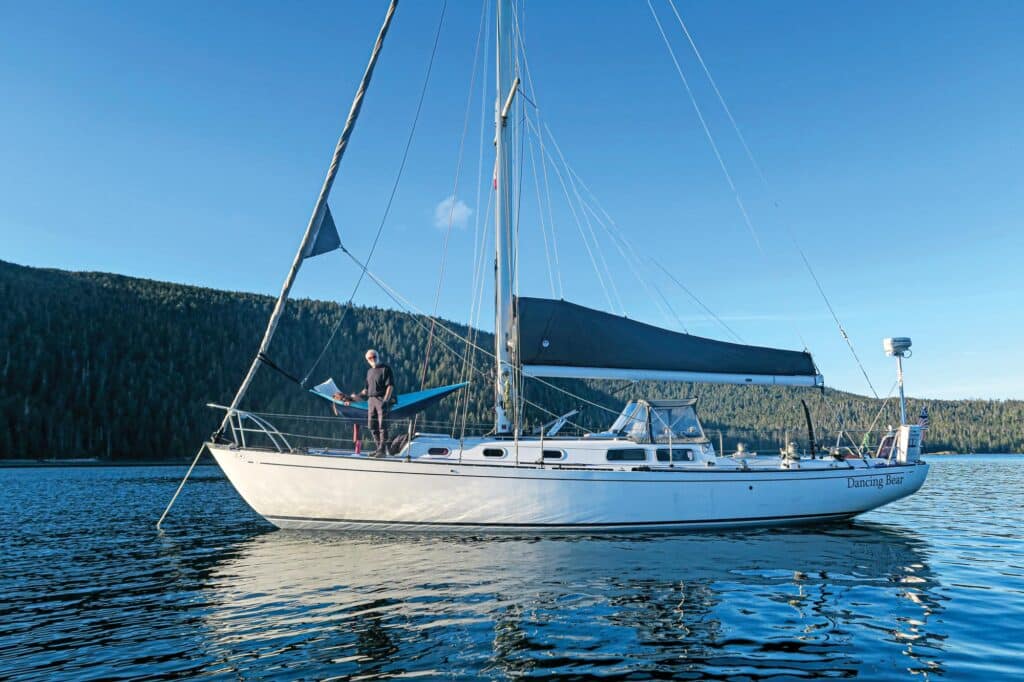
You never forget your best day of sailing. Mine came in the waning miles of the 2005 Transpac Race from Los Angeles to Honolulu, screeching down the Molokai Channel under spinnaker toward Diamond Head in 30 knots of pumping trade-wind breeze, hanging onto the tiller for dear, lovely life while surfing at 14 knots aboard a Cal 40 called Dancing Bear. The sun was searing, the wind was howling, and the deep, blue Pacific Ocean was all the more striking set against the stunning backdrop of the green volcanic islands.
This remembrance, however, is not about me. Instead, it honors the legendary Cal 40, a William Lapworth design originally launched in Southern California in 1963 that has provided scores of fellow offshore sailors with rides they’ll always hold dear. Though I do recall my first thoughts to a fellow shipmate soon after crossing the finish line: “God, I love a boat that’s better than I am.”
All this came back to me last summer, when I joined Dancing Bear’ s owner and skipper, accomplished Pacific Northwest sailor Mark Schrader, for a cruise northward from Anacortes, Washington, and up the coast of Vancouver Island. It’s a far different venue and excursion than the Transpac, but one that made me appreciate the Cal 40 in a new light. This is one versatile vessel.
From the outset, the Cal 40 was considered a radical, ultra-light design, displacing just 15,000 pounds with 6,000 pounds of ballast and a flat, canoe-shaped hull that was ideal for prolonged downwind surfs. What really separated it from other boats of its era—hulls with long overhangs and deep, full keels from prominent East Coast yacht designers like Sparkman & Stephens—was the fin keel and detached spade rudder, greatly reducing the boat’s wetted surface. A similar appendage was employed in the winning America’s Cup 12-Metre Intrepid, but that was four years later.
Read Next: An Ocean Sailor Tries Freshwater Racing
The Cal 40’s production run lasted eight years and produced 108 boats, which are still highly sought-after. There’s no question that the boat has reached cult status and that it remains highly competitive. Indeed, the overall winner of the 108-boat fleet in the 2022 Newport Bermuda Race and the recipient of the coveted St. David’s Lighthouse Trophy was Sally and Stan Honey’s Cal 40, Illusion.
Yes, the Honeys are world-class sailors—Stan is a renowned professional offshore racer and navigator, and Sally is a two-time Rolex Yachtswoman of the Year—and they recruited an all-star crew after Illusion had undergone a full refit. Still, Illusion was almost 60 years old. The Honeys purchased the boat in 1988 and spent the ensuing decades racing and cruising it. They decided to campaign it one final time in 2022. Their victorious attempt, covering the 635-nautical-mile voyage in 87 hours, included a textbook crossing of the Gulf Stream and a top-speed burst of 22 knots, both of which were winning highlights.
My own trip last summer on Dancing Bear was a decidedly more mellow affair, but we also scored our own personal highlights. For me, one of those was taking the helm on a cold, funky overnight passage from the coast of British Columbia across the Hecate Strait to the archipelago known as Haida Gwaii, formerly the Queen Charlotte Islands. The sensation of driving a solid craft offshore, nestled deep in the cockpit on a tiller-steered boat, is rare and wonderful. In the wind and waves, everything balanced and in harmony, I fell in love with the Cal 40 all over again.
- More: October 2023 , Sailboats , Sailing , Sailing Yachts , Silent Running , Yachts
- More Yachts
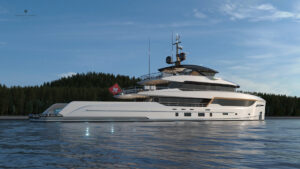
New Flagship for Bering Yachts: The B165
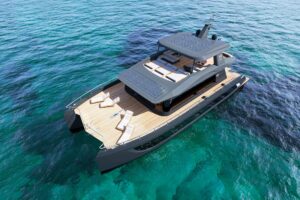
Power Catamaran Popularity Rising
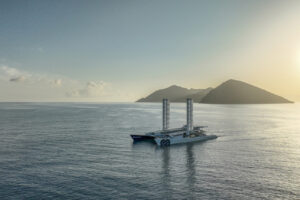
“Energy Observer” Zero-Emission Boat Showcases Sustainability
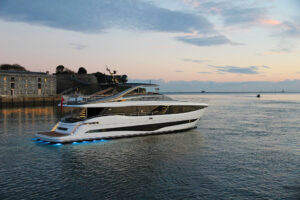
Princess Yachts’ Y95: A Flagship Flybridge
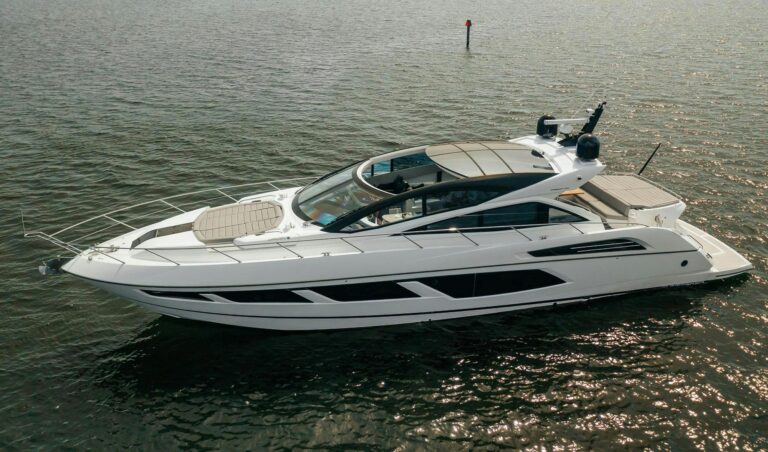
For Sale: Sunseeker Predator 68
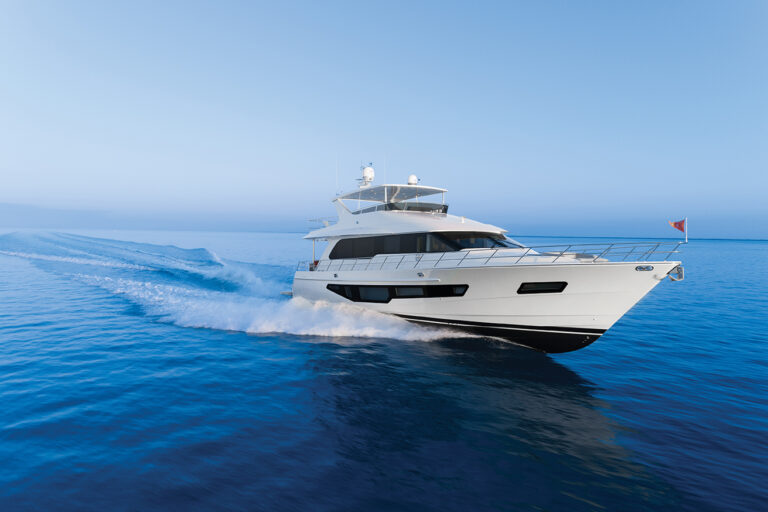
For Sale: CL Yachts CLB 72
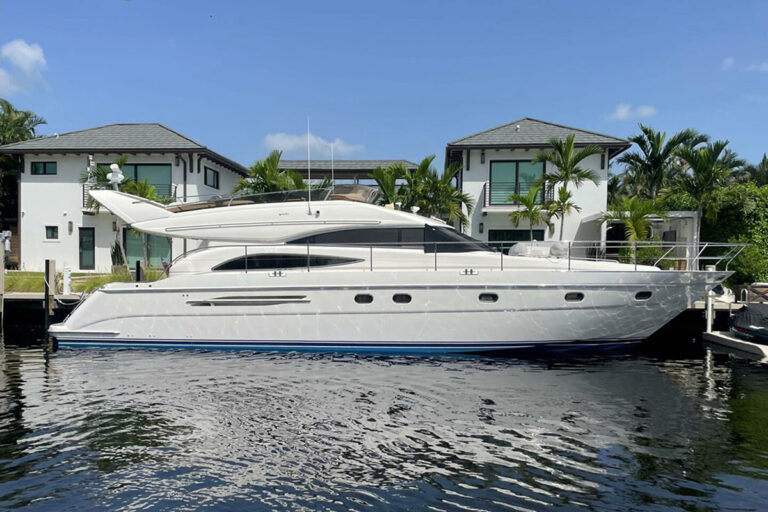
10 Yachts Under $500,000 You Can Have Today
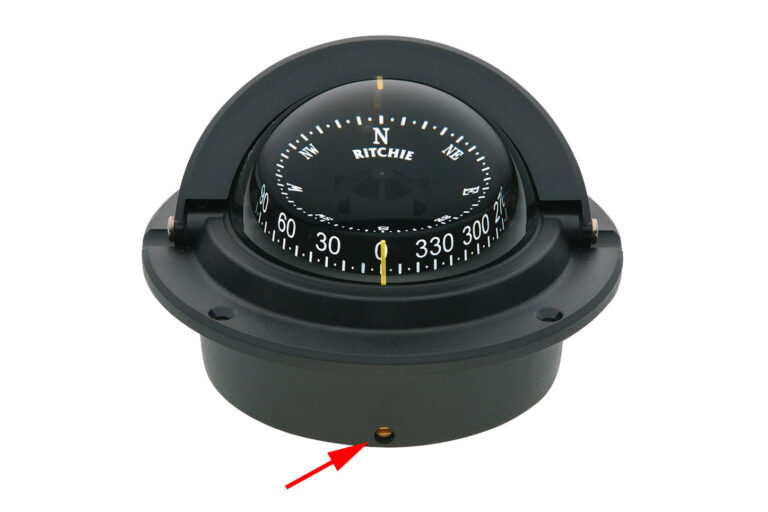
How to Swing a Compass on a Boat

- Digital Edition
- Customer Service
- Privacy Policy
- Email Newsletters
- Cruising World
- Sailing World
- Salt Water Sportsman
- Sport Fishing
- Wakeboarding

Also in Perry on Design
- Dragonfly 40
- Wallyrocket 51
- Clubswan 28
- Beneteau Oceanis 37.1
- M.A.T. 12.2
Also from Robert H. Perry
- Practical Boat Owner
- Digital edition

Cal 40: The 1960s US classic that deserves restoration
- September 8, 2021
The Cal 40's traditional appearance belies her lightweight design and her surprising scarcity value, writes Rupert Holmes

Photos: PPL Photo Agency
The traditional styling of this boat, with its counter stern and raked bow, might lead onlookers to assume it’s a typical heavy long keeler from the early 1960s.
However, it’s a lightweight design with the potential to surf at speeds of 15-16 knots for sustained periods. Of course, when the Cal 40 was first launched in 1963 there were many naysayers, who couldn’t believe that such a light boat could be engineered to withstand the rigours of the ocean.
Yet the design won the 1965, 67 and 69 TransPac races, having sailed 2,250 miles from Los Angeles to Hawaii. Cal 40s also took positions 1, 3, 4, 5 and 6 in the 1966 Newport to Bermuda race.
Article continues below…

Island Packet 350: A boat that delivers you in style
This Florida-based yard has produced a range of distinctive long keel serious cruising designs for more than 40 years. These…

Legend 356 sailboat: Big in Britain but born in the USA
Hunter Marine became a major force in boatbuilding from the 1980s through to the financial crisis of 2008, with the…
So what was the secret to this boat’s success? Designer Bill Lapworth drew a radically flat bottomed boat by the standards of the early 1960s, with well balanced ends and a fin keel with a relatively long chord length.
The fairly narrow transom means the Cal 40 rolls downwind far more than today’s broad stern designs, but remains on course as it does so and the big spade rudder is easily able to retain control, even when sailing on autopilot.
Accommodation is in a traditional layout, with a good size forecabin, plus heads and stowage space between that and the saloon. This has two settees with pilot berths outboard and a folding central table.

There’s also a reasonable galley, large chart table and a pair of snug quarter berths. The Cal 40 has gained a semi-cult status over the years.
Well known owners include Volvo Ocean Race winning navigator and multiple sailing speed record holder Stan Honey and his wife Sally Lindsey Honey, a double winner of the USA’s Yachtswoman of the Year award.
Prices vary considerably, but even tired examples are becoming more expensive, while very well equipped and maintained boats can change hands for much higher figures than most boats of this era.
Cal 40 specification
LOA: 12.00m / 39ft 4in LWL: 9.25m / 30ft 4in Beam: 3.35m / 11ft 0in Draught: 1.70m / 5ft 7in Displacement: 6,800kg / 15,000lb Ballast: 2,700kg / 6,000lb Sail area: 65m2 / 700ft2 Current market value: £50,000-£120,000 / $68,000-$164,000
Yachting World
- Digital Edition

World’s coolest yachts: Cal40
- Helen Fretter
- October 7, 2022
We ask top sailors and marine industry gurus to choose the coolest and most innovative yachts of our times. Stan Honey nominates the Cal40

The Cal40 has iconic status in the United States and was a game-changer in the 1960s as a true racer/cruiser. Designed by Bill Lapworth, it has a radical flat-bottomed hull and separate rudder and keel, and was famed for its downwind surfing performance.
“The Cal40 revolutionised yacht design,” says Honey. “All ocean racers that came after had the fin keel and spade rudder that the Cal40 proved in the mid-1960s, dominating the sport including the Transpac, Bermuda Race, SORC etc. The Cal40 remains competitive in racing and an easy-to-sail, well-mannered cruising boat, perfect for a couple.

A Cal40 surfing into the finish of the Transpac. Photo: Betsy Senescu/Ultimate Sailing
“One aspect of owning a Cal40 is that everywhere you go folks come by the boat and tell stories about how they used to race on a Cal40 and that they love the boat. They have friends and admirers everywhere. It’s like driving a 1965 Mustang, everybody has fond memories. The Cal40 changed the design of offshore sailboats, like the ’65 Mustang changed the design of cars, forever.”
Make sure you check out our full list of Coolest Yachts.
Cal40 stats rating
Top speed: 22 knots LOA: 11.99m/39.3ft Launched: 1963 Berths: 6 Price: $30,000-$80,000 Adrenalin factor: 70%
Stan Honey is one of the world’s most accomplished navigators, having won the Trophée Jules Verne and Volvo Ocean Race , and set 24-hour, transpacific and transatlantic records. He’s navigated on Playstation , Groupama 3 , Comanche , and the J Class Hanuman . He and his wife, Sally, also cruised and raced their Cal40 Illusion for 30 years.
If you enjoyed this….
Yachting World is the world’s leading magazine for bluewater cruisers and offshore sailors. Every month we have inspirational adventures and practical features to help you realise your sailing dreams. Build your knowledge with a subscription delivered to your door. See our latest offers and save at least 30% off the cover price.
Great choice! Your favorites are temporarily saved for this session. Sign in to save them permanently, access them on any device, and receive relevant alerts.
- Sailboat Guide
Cal 40 is a 39 ′ 4 ″ / 12 m monohull sailboat designed by C. William Lapworth and built by Jensen Marine/Cal Boats between 1963 and 1971.

- 2 / 4 Annapolis, MD, US Cal 40 $7,000 USD View
- 3 / 4 Annapolis, MD, US Cal 40 $7,000 USD View
- 4 / 4 Annapolis, MD, US Cal 40 $7,000 USD View
Rig and Sails
Auxilary power, accomodations, calculations.
The theoretical maximum speed that a displacement hull can move efficiently through the water is determined by it's waterline length and displacement. It may be unable to reach this speed if the boat is underpowered or heavily loaded, though it may exceed this speed given enough power. Read more.
Classic hull speed formula:
Hull Speed = 1.34 x √LWL
Max Speed/Length ratio = 8.26 ÷ Displacement/Length ratio .311 Hull Speed = Max Speed/Length ratio x √LWL
Sail Area / Displacement Ratio
A measure of the power of the sails relative to the weight of the boat. The higher the number, the higher the performance, but the harder the boat will be to handle. This ratio is a "non-dimensional" value that facilitates comparisons between boats of different types and sizes. Read more.
SA/D = SA ÷ (D ÷ 64) 2/3
- SA : Sail area in square feet, derived by adding the mainsail area to 100% of the foretriangle area (the lateral area above the deck between the mast and the forestay).
- D : Displacement in pounds.
Ballast / Displacement Ratio
A measure of the stability of a boat's hull that suggests how well a monohull will stand up to its sails. The ballast displacement ratio indicates how much of the weight of a boat is placed for maximum stability against capsizing and is an indicator of stiffness and resistance to capsize.
Ballast / Displacement * 100
Displacement / Length Ratio
A measure of the weight of the boat relative to it's length at the waterline. The higher a boat’s D/L ratio, the more easily it will carry a load and the more comfortable its motion will be. The lower a boat's ratio is, the less power it takes to drive the boat to its nominal hull speed or beyond. Read more.
D/L = (D ÷ 2240) ÷ (0.01 x LWL)³
- D: Displacement of the boat in pounds.
- LWL: Waterline length in feet
Comfort Ratio
This ratio assess how quickly and abruptly a boat’s hull reacts to waves in a significant seaway, these being the elements of a boat’s motion most likely to cause seasickness. Read more.
Comfort ratio = D ÷ (.65 x (.7 LWL + .3 LOA) x Beam 1.33 )
- D: Displacement of the boat in pounds
- LOA: Length overall in feet
- Beam: Width of boat at the widest point in feet
Capsize Screening Formula
This formula attempts to indicate whether a given boat might be too wide and light to readily right itself after being overturned in extreme conditions. Read more.
CSV = Beam ÷ ³√(D / 64)
The accolades for this particular boat are many. Certainly one of the most influential designs and successful racing boats ever. With 160 built, it was also a commercial success for Jensen Marine. Less mention is made of the man, George Griffith, who actually commissioned the design, and agreed to back the construction of the first ten boats.
This added note from Robert VanderPol II: “There is a single example of a raised deck Cal 40 similar to the Cal 25 & 28. Jensen Marine was promised a number of orders. All but one backed out at the last minute and only one was built and delivered.”
Embed this page on your own website by copying and pasting this code.

Discover Related Sailboats

Cruising World: 40 Best Sailboats
Cruising World polled their readers to determine the best sailboats of all time.
- About Sailboat Guide
©2024 Sea Time Tech, LLC
This site is protected by reCAPTCHA and the Google Privacy Policy and Terms of Service apply.

7 Bluewater Cruising Sailboats We Love

Our editorial staff selected 7 bluewater cruising sailboats from 26 to 42 feet, from all over the world. Bluewater sailing is a type of ocean cruising: it refers to long-term open sea cruising, for example, passages (ocean crossings). Bluewater sailing implies a lack of support and requires a certain amount of self-sufficiency, since you’re away from land for long periods of time. An example is crossing the Atlantic. But you can’t just stock up any boat and go at it: not all boats can handle ‘blue water’. You need a different boat type and also some add-ons. Which is your preferred among these bluewater cruising sailboats?

Designed by Bill Lapworth and built by Jensen Marine, the Cal 40 was nothing less than revolutionary, and displaced a mere 15,000 pounds, unheard of when first launched in 1964.
Contessa 26

This cruiser was designed by David Sadler, built by J.J. Taylor & Sons of Toronto, Canada and a few other builders, and made forever famous by then 18-year-old Tania Aebi, who completed her solo circumnavigation aboard Varuna at the age of 21.
Dufour Arpège 30

The Arpege 30 was introduced in 1966 and had a fairly long production run of approximately 1,500 boats. The Dufour Arpege hull is solid fiberglass and the deck may or may not have been cored.
Hinckley Bermuda 40

This Bill Tripp -designed sailboat, produced in Maine by one of America’s greatest Builders, might just define elegance afloat. Production began in 1959 and continued into the 1990s with a few changes.

Island Packet 420

Island Packet builds distinctive, full-keel bluewater sailboats that have almost a cult following. They’re solid glass, heavy cruisers that won’t set any speed records but will get you there in safety and comfort. Designed by Bob Johnson, it is not offered as a new build anymore.
Tartan 3700

On-deck, the 3700 features details that deliver excellent aesthetics, comfort and security. Wide side decks provide safe and secure fore and aft movement, while abundant ventilation offerings include all-opening stainless steel house side portlights, cockpit portlights, stainless steel deck hatches and 2 stainless steel dorade ventilators with stainless guards.
Westsail 32

The Westsail 32 was a production fiberglass sailboat built between the years of 1971 and 1980. Approximately 830 were built, about half of them in kit form. The “W32”, as they are often referred to, was very heavily built and has taken many people on trouble-free voyages and several circumnavigations.
Group Beneteau: Record full-year earnings in 2023
Five best places where to sail at least one time in your life, the countdown has begun for the new ice 66 rs, lagoon 60, freedom of space and panoramic views, live your passion, subscribe to our mailing list.
Hans Christian 41
Hinkley 40…wow!
- New Sailboats
- Sailboats 21-30ft
- Sailboats 31-35ft
- Sailboats 36-40ft
- Sailboats Over 40ft
- Sailboats Under 21feet
- used_sailboats
- Apps and Computer Programs
- Communications
- Fishfinders
- Handheld Electronics
- Plotters MFDS Rradar
- Wind, Speed & Depth Instruments
- Anchoring Mooring
- Running Rigging
- Sails Canvas
- Standing Rigging
- Diesel Engines
- Off Grid Energy
- Cleaning Waxing
- DIY Projects
- Repair, Tools & Materials
- Spare Parts
- Tools & Gadgets
- Cabin Comfort
- Ventilation
- Footwear Apparel
- Foul Weather Gear
- Mailport & PS Advisor
- Inside Practical Sailor Blog
- Activate My Web Access
- Reset Password
- Pay My Bill
- Customer Service

- Free Newsletter
- Give a Gift

How to Sell Your Boat

Cal 2-46: A Venerable Lapworth Design Brought Up to Date

Rhumb Lines: Show Highlights from Annapolis

Open Transom Pros and Cons


Leaping Into Lithium

The Importance of Sea State in Weather Planning

Do-it-yourself Electrical System Survey and Inspection

Install a Standalone Sounder Without Drilling

When Should We Retire Dyneema Stays and Running Rigging?

Rethinking MOB Prevention

Top-notch Wind Indicators

The Everlasting Multihull Trampoline

How Dangerous is Your Shore Power?

DIY survey of boat solar and wind turbine systems

What’s Involved in Setting Up a Lithium Battery System?

The Scraper-only Approach to Bottom Paint Removal

Can You Recoat Dyneema?

Gonytia Hot Knife Proves its Mettle

Where Winches Dare to Go

The Day Sailor’s First-Aid Kit

Choosing and Securing Seat Cushions

Cockpit Drains on Race Boats

Rhumb Lines: Livin’ the Wharf Rat Life

Re-sealing the Seams on Waterproof Fabrics

Safer Sailing: Add Leg Loops to Your Harness

Waxing and Polishing Your Boat

Reducing Engine Room Noise

Tricks and Tips to Forming Do-it-yourself Rigging Terminals

Marine Toilet Maintenance Tips

Learning to Live with Plastic Boat Bits
- Sailboat Reviews
Caliber 40 LRC
This well-built cruising boat with an attractive wood interior has loads of room but sails marginally to windward and has a few problems with its tanks..
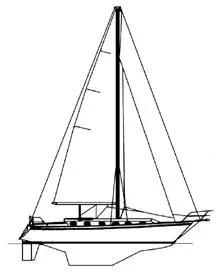
Brothers George and Michael McCreary, and Marshall Jones, formed Caliber Yachts Inc. as a backyard boatbuilding company in 1979. No strangers to the sailing world, the brothers grew up racing and cruising Florida and the Caribbean.
Following high school, Mike earned a degree in engineering, with a specialty in naval architecture, from the University of Michigan. He served his apprenticeship on the production line at Gulfstar Yachts, and as a designer for Endeavour Yachts.
George, who manages the business side, received a degree in business administration and marketing from the University of Florida, after which he spent three years working for Morgan Yachts.
Jones began studying the production side of the business immediately following graduation from high school when he went to work at Com-Pac Yachts.
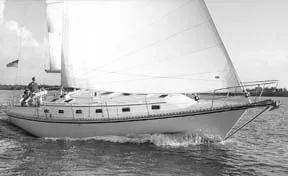
Without bank financing, Caliber Yachts began building boats one at a time, producing its first, a 28-footer, in 1981. By 1985 the company was sufficiently solvent to build a factory, and introduce a 33-footer. A 30, 35, 40, and 47 followed. The Long Range Cruising (LRC) line began in 1994.
George, who acts as company spokesman, says the construction and design of the LRC is similar to earlier models. The primary difference is expanded tankage for fuel and water.
The Caliber 40 LRC has a projected cruising range of 1,484 miles when motoring at 7 knots with a Yanmar 50 diesel running at 2,500 rpm.
George is tightlipped about information he considers proprietary—the company’s gross sales, annual production, and number of employees or dealers, for example.
Design Michael McCreary designed the 40 LRC, which is most often compared to an Island Packet.
It has a relatively fine entry, bowsprit and bobstay, straight sheer, reverse transom, and flat coachroof. The displacement/length ratio is a moderately hefty 281, indicating it has the hull volume to carry necessary cruising stores. A Valiant 40 is 256, a Sabre 38 224, and a J/40 176.
Ballast of 9,500 lbs. is 44% of displacement. McCreary says its limit of positive stability is 138°, well in excess of the 120 figure many consider minimum for offshore sailing.
The underbody shows a long cruising fin; you could also call it a full keel with a cutaway forefoot and a monster “Brewer bite.” The rudder is skeg-mounted for protection and tracking.
Shrouds are led to chainplates mounted inboard of the toerail, and the genoa track is close to the cabin for narrow sheeting angles.
McCreary claims the boat tacks through 85°-90°, but we were unable to approach those tacking angles during our test sail, nor have we heard from any owner capable of tacking through less than 96°, including one who invested $6,000 on flat cut, laminated sails.
Sail area is 739 sq. ft., with a sail area/displacement (SA/D) of 15.3; that compares to a Valiant 40 at 15.5, falling in the general range for offshore cruisers.
The company has built 130 40 LCRs since its introduction in 1994.
Construction McCreary would not provide a complete lamination schedule for publication because he considers the information proprietary and subject to misinterpretation. He said that buyers or owners who want that information should contact him directly.
However, he described the lay-up in general terms.
Hand lay-up of the solid glass hull begins with molds sprayed with isophthalic-neopentyl gelcoat, followed by a skin layer of .75-oz. split-strand fiberglass set in vinylester resin to prevent blistering.
The keel shape is part of the hull mold with a cavity for the iron and concrete ballast that is glassed over.
Though no molded liners or pans are used except in the heads (an appropriate application to deal with moisture from showers and toilet leaks), the hull is stiffened by the bonding in of a molded Integral Strength-Grid System™ that incorporates water and two fuel tanks.
The deck is cored with Marine Tech plywood cut into 2-7/8″ squares bedded in alternating layers of 1.5-oz. mat and 24-oz. roving. McCreary says that wood is used because it resists compression when deck hardware is installed, which he considers a shortcoming of balsa and foam cores. (Many builders using balsa or foam omit it where hardware is to be installed, and use wood or solid resin/glass.)
Extra layers of glass are laminated around the perimeter of the cabin and cockpit, and radiuses are reinforced with 18-oz. Fabmat.
The Quad-Seal Deck to Hull System™ is sturdy and well done. The deck and hull flanges are bonded with 3M 5200. The inside seam is bonded with copolymer tape. An L-shaped aluminum toerail covers the exterior seam; it is also bonded with 3M 5200 and fastened with stainless steel carriage bolts on 6″ centers. A stainless rubrail covers the seam between toerail and hull.
Caliber seems to have a name for everything, including conventional bonding of bulkheads to the hull. Caliber calls its method The Multi-Bulkhead Bonding System™. Furniture and cabinetry are bonded in the same manner. A built-up plywood interior bonded to the hull and deck is in many ways preferable to a one-piece fiberglass pan interior.
Chainplates are through-bolted to bulkheads as well as the deck. Caliber calls it the Double-Lock Chainplate System™.
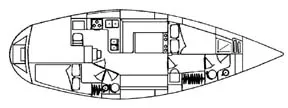
The molded rudder is constructed of a stainless steel plate welded to a 2″ diameter stainless steel stock encapsulated in fiberglass. When released from the mold, fiberglass tape is laid over the seam to prevent leaks, and the appendage is then faired and sprayed with gelcoat.
Loads on the rudderstock are handled by three supports: a solid stainless steel shoe attached to the bottom of the skeg, a bronze stuffing box at the waterline, and an upper bearing.
To offset the potential for contamination of fuel or water, boats are equipped with “Duel Diesel and Dual Fresh Water” system control panels with independent piping and filters.
However, while at the fuel dock the owners of our test boat complained that the fuel and water fillers are not marked, and are so close to each other that spilled fuel could enter the water filler.
Several owners think the boat’s holding tank incorporates a major design flaw. The 110-gal. integral tank is in the bow below the anchor locker. The aft side of the holding tank extends from the bottom of the hull to the deck, doubling as a watertight collision bulkhead.
The design provides structural integrity, but McCreary confirmed that when pumping out the tank it is critical that vent screens are clean; otherwise, a clogged vent may create sufficient suction on the holding tank wall to cause delamination of the hull. After talking with several owners, we think McCreary has understated the problem.
One owner experienced the problem when flushing the toilet while sailing offshore.
“As I pumped I heard a scary cracking sound in the holding tank,” he said. Upon inspection, he found the vent micro-screens were clogged. “When I opened the Y-valve I heard a major ‘whoosh’ as pressure was released,” he said.
Another owner said a more damaging result occurred under similar circumstances when the screen clogged and the top of the holding tank split away from the hull, creating an 11″ long crack, not to mention a horrible mess.
Additionally, a full holding tank adds 912 lbs. of weight in the bow, according to McCreary; coupled with anchor and rode, we think that is excessive. The holding tank also services the aft head, so waste may accumulate in hoses under the saloon.
The vacuum problem may extend to water and fuel tanks equipped with the same screens. One owner reported the inability to pump water from a tank, though the water pump was operating properly. The screens require cleaning or replacement.
Deck The T-shaped cockpit is comfortable, with 7′ 6″ seats and high backrests.
A port lazarette is 32″ deep and has a 16″ wide shelf and scallops for organizing spare lines. It also provides access to the aft end of the engine, batteries, and steering controls. There is space for the installation of a cabin heating system and genset.
Other features include an ice chest and vented propane locker with room for two 10-lb. bottles.
The transom platform has a built-in swim ladder.
For sail handling, two-speed Lewmar 48 winches are located on the coaming within reach of the helmsman, but the mainsheet traveler, mounted on the coachroof, requires a shorthanded sailor to leave the helm to trim the main. Two Lewmar 30s are mounted on the cabin top with triple rope clutches for sail control lines.
The untapered Selden mast has single spreaders.
The test boat was equipped with an optional inner forestay for setting a staysail. Tension on the stay is controlled by an uphaul inside the mast attached to a stainless sliding car to which the stay is attached. When not in service, the stay is secured out of the way to a padeye on deck.

The headstay and upper shrouds are 3/8″; the backstay and lower shrouds are 5/16″. The split backstay eases boarding but a single backstay would allow for an integral adjuster to control sail shape.
With wide decks, lifelines, handrails and slotted toerail, movement about the boat is easy and safe.
A double-roller stainless steel bowsprit moves ground tackle well forward of the stem and furling gear. The split anchor locker on our test boat carried a 30-kg Bruce, 200′ of chain and 200′ of rode in one compartment, and a 25-lb. Danforth and rode in the other.
Accommodations Joinerwork is nicely done; the 40 LRC looks like a traditional cruising boat—teak and holly sole, teak hull liners and bulkheads.
Headroom is 6′ 2″ throughout.
The master stateroom forward has an offset double berth measuring 6′ 4″ x 4′ 4″. It’s a nice change from the usual V-berth, though the person sleeping outboard has to climb over his or her partner to get out.
We like the head in the bow, but it won’t be as comfortable to use at sea as the aft head. There is a separate shower stall.
The L-shaped dinette settee to port is 6′ 2″ long, and converts to a double berth. The starboard settee is 6′. The dinette table folds down from the bulkhead.
In the galley, the fiberglass sink is located on centerline, where it should be to prevent water from flooding through the drain. The stove/oven is Force 10 and there’s room for a microwave. The 11 cu. ft. top loading icebox drains into a sump pump box at the mast step.
The nav station is aft of the galley. The navigator faces a large electrical and instrument panel outboard and communicates with the helmsman by opening a port beside his seat.
To starboard is what McCreary calls a “day head,” with doors from the saloon or aft berth. The head measures 42″ x 36″ and has toilet, sink and a shower; one dealer referred to it as a “telephone booth.”
The aft stateroom berth measures 6′ 7″x4′ 4″. There’s a cedar-lined hanging locker. Storage space below the berth is shared with an 11-gallon water heater.
Access to wiring, plumbing, through-hulls and tank inspection ports throughout the boat are from inside cabinets or behind fascias.
The top step on the companionway ladder opens to provide access to the top of engine; if desired, the entire ladder/box can be removed.
One owner complained that the engine compartment is inadequately insulated; he added lead-lined foam insulation but is still dissatisfied with engine noise in the saloon.
Performance Our test sail was with a Seattle couple that has owned four boats prior to the 40 LRC, most recently a light displacement, fin keel 36-footer.
“We didn’t want a full keel,” they said. “But we wanted a good shape, aesthetics, and a full-batten main and cutter rig so we could reef and sail with the staysail in 40 knots of breeze.
“The first thing we had to adapt to was the difference in feel and stiffness of this boat. It’s not as much fun as our old 36, but it is easier to sail.”
We tested the boat in 0-12 knots of apparent wind on calm waters, setting a 135% genoa on a Harken furler.
Considering its displacement, it is no surprise that in less than 6 knots of wind the boat moves only with assistance from the “iron genny.” When windspeed reached 6 knots it made 2-3 knots; at 7-9 knots of breeze we accelerated to 4.5 knots. Then, in 9-12 knots of wind, we sailed at 5-5.5 knots to within 60° of the apparent wind. On a broad reach, we managed to hit 7.2 knots in 10-12 knot puffs.
Additional performance information came from another Seattle owner who has logged more than 4,000 miles on his boat. A racer-turned-cruiser, he has pushed the boat hard and has computerized performance data. He replaced the factory main with a flat cut, large roach Spectra sail.
“I wanted to find out just how seaworthy the boat is, and how well she sails,” he said. “We sailed 250 miles to weather during a 36-hour trip up the west coast of Vancouver Island. Carried a 120% jib and full main sailing into 5-6 foot seas in steady 15-20-knot winds. I had a mapping program calibrated to my GPS and found that the best tacking angle we could produce was 112°.
“Going to weather in winds over 20 knots we furl the jib and hoist an overlapping staysail. We added sail track inside the Dorades to improve pointing and found that when wind speeds reach 20 knots we point 5° higher with the staysail, improve our VMG, and are more comfortable.
“On the return downwind we noticed a tendency to roll to windward in heavy seas, even with shortened headsail.”
Following an offshore passage from San Francisco to San Diego a cruising couple echoed his sentiments.
“When beam and broad reaching in winds around 25 knots the boat will round up if I have too much sail up,” the husband said. “When on a broad reach it gets even worse because the rollers hitting the stern push the stern to leeward, so it’s important to shorten sail early. On the other hand, I don’t think this was any worse than any other boat I’ve sailed on.”
A number of owners said they have fitted a feathering Max-Prop to the 50-hp. Yanmar diesel, which improves maneuverability, especially in reverse, and reduces drag under sail.
Warranty The company’s one-year warranty is too short, considering the price and intended use of the boat. The warranty for blistering is extended to five years if the bottom is epoxied during construction.
However, Chester Kolascz, a dealer who has represented the company for eight years in Michigan and also represents two other mainstream builders, said: “My service department likes Caliber best because it has the least amount of warranty work of any of the three.”
Conclusion The design and construction of the Caliber 40 LRC make it suitable for offshore use. In decent winds it should give 150-180-mile days. Upwind performance is typical of moderately heavy cruising boats; odds are she’ll be motorsailed on long coastal trips to weather. On balance, she’ll cover fewer miles than lighter-weight competitors, but will provide a more comfortable ride in heavy seas.
Among owners contacted, the company gets mixed reviews regarding post-sale service. In one instance the company shared the expense of a repair more than one year after expiration of the warranty.
Base price seems a fair $204,950, FOB Clearwater, Florida. For comparison, a Cabo Rico 40 is close to $400,000, a Catalina 40 Mk II and a Jeanneau Sun Fast 40 about $170,000, and the C&C 121 Express about $220,000.
Contact- Caliber Yachts, 4551 107th Circle N., Clearwater, FL 33762; 813/573-0627.
RELATED ARTICLES MORE FROM AUTHOR
Leave a reply cancel reply.
Log in to leave a comment
Latest Videos

Island Packet 370: What You Should Know | Boat Review

How To Make Starlink Better On Your Boat | Interview

Catalina 380: What You Should Know | Boat Review
- Privacy Policy
- Do Not Sell My Personal Information
- Online Account Activation
- Privacy Manager

- Forum Listing
- Marketplace
- Advanced Search
- About The Boat
- Boat Review Forum
- SailNet is a forum community dedicated to Sailing enthusiasts. Come join the discussion about sailing, modifications, classifieds, troubleshooting, repairs, reviews, maintenance, and more!
Caliber 40 LRC and Sabre 402
- Add to quote
The Sabre 402 isn't designed as a bluewater cruiser, while the Caliber 40 LRC definitely was purposely designed as such. The Sabre can probably point higher and does better in light winds. The Caliber is probably more seakindly.
sabre can be made in to a decent voyager...and it sails very well, even in light winds..and can point higher than the LRC.. Sabre will be short on all tankage and storage for most long voyages. It has a less comfortable motion in large seas than the caliber, not sure if it is the keel or the weight, but I found that the Sabre bobs a bit in heavy seas...the LRC just shoulders through on a straight line The Sabre to me is much more comfortable at the dock and most are "light and airy" compared to the LRC...but the LRC has the Sabre beat on seaworthiness in general Both are well made boats, just different purposes. Neither have a host of inherent problems, quite the opposite...but I would speak with and hire the surveyor who knows voyaging boats, were I in your position - wanting to cross oceans... I have owned the Sabre and only crewed on the LRC...so I may be a tad partial to the Sabre...but you will need to do quite a bit of upgrading to the Sabre to get what the LRC comes with..
Sabres are beautiful boats. I looked at several when I was boat shopping but because I wanted to do ocean passages I got a Caliber.
All good posts with valid comments. But think about the day you want to sell the boat. I think the Sabre will sell more quickly than the Caliber when you are ready to move on.
I think the Sabre will sell more quickly ... when you are ready to move on. Click to expand...
2 different boats for two different purposes. Both excellant builds and reputations. You wont have any trouble selling either. Notice there are very few Calibers for sale ever. Both 40s are on our short list. Sabre better light air performance and quicker overall. Cant go wrong with a well maintained Sabre or Caliber Dave
I would greatly appreciate some more thoughts on the comments about the seaworthiness of the Sabre as far as ocean passages go. I started looking at Island Packet 35's (the same sort of high displacement design thinking as the caliber), but then found a Sabre 42 for about the same price that is very well equipped. By going up in size I was able to get more of the storage and tankage that came in the smaller IP, but also feel that I am getting a boat that sails much better. I just helped take an IP42 from West Florida to the Bahamas last week and there was definitely a clear shortage of any light wind performance and the iron genoa was cranked up much more than I would be happy with. kd3pc- you commented that the Sabre would need much more upgrading to be capable of ocean passages, versus what the Caliber comes with. Do you think you could expand on this a bit? Sailingdog- you stated that the Sabre isn't designed as a blue-water cruiser, do you think you could add a few more comments? While I know that the Sabre isn't built with the same full keel, heavy displacement philosophy, I am still under the impression that it will make a good boat to not only enjoy cruising the caribbean with, but to also head to the Pacific in. Am I wrong in this assessment? Thank you for your thoughts... Drew
Our slipmate has a Sabre 425 and in my mind its built to a standard (similar to the Tartan 40 I crewed on for 3 years) that I would feel comfortable sailing offshore. He has raced it to Bermuda with no problems. I'm not sure about tankage, but I'd choose a Sabre over a Caliber (and I'm a Caliber fan)and figure out how to deal with the tankage issue. Well built and fast would be the combination I'd look for for offshore. People have circumnaved 40+ foot Hunter's and Catalina's, so there is no way you can say either of these boats are not up to the task. The Caliber's aren't slow, but a Sabre would do a horizon job on the Caliber pretty quickly and many times the boat that gets to port earlier misses having its build strength/crew endurance tested.
lawdawg: Did you ever get a reply on the blue water capabilities of the Sabre 402? I am looking to buy one and would appreciate sharing thoughts on that. Feel free to call 847-942-9400
I know this is an older thread but I am responding to help with future searches. I can tell you that the light wind performance of the Caliber 40LRC is comparable to a mid 80s Ericson 34 or 35. The pointing ability is nearly comparable to a Sabre 402 with a wing keel although the sabre will be a little faster at the same angle. The interior comfort we believe is much better in the Caliber because of the Pullman berth. The Sabre has a conventional layout where you have to climb out of bed across your pillow assuming your pillow has not already hit the sole. Although it can be argued that having to crawl over a body in the Pullman berth is also bad. We have no problem with it after nearly 3 years living aboard. For off shore work, the Caliber will have better motion comfort as it has a better entry while the Sabre has a wide rear end that can cause some issues off the wind. The Caliber was designed for off shore work. The Sabre not so much. The Caliber has a skeg hung rudder, reinforced bow section and leading edge of the keel. The Caliber also has collision bulkheads that make it a safer passage-maker. The bow under the anchor locker is the holding tank which can sustain a hole without flooding the boat. All water and fuel tankage is built into the hull and is redundant. You can hole any of the areas below the tops of the tanks and not flood the boat and also not affect the sailability or performance of the boat. The fuel capacity is 210 gallons. That is a 1,400nm range. Water capacity is 175 and because of the built in tanks there is lots of room for a watermaker. A perceived vulnerability of the Caliber is the encapsulated keel. Fears of damaging the outer skin and water intrusion have been addressed by doubling the thickness of the outer skin and also creating a collision zone in the forward area of the keel that does not easily perforate the area where the ballast is located. IOW, the ballast does not start until about a foot back from the leading edge of the keel. There is also a rudder dam that rises above the WL that prevents flooding should your rudder packing gland fail. A safety feature that we and our dog love is the conventional step/rise 90° companionway steps. You enter the cabin facing forward. One last point in favor of the Caliber being a better off-shore boat would be the cutter rig. We love being able to reef the genny and put out the stay-sail from the cockpit. All lines are led to the cockpit standard from the factory. Redundant heads is also nice if you should have a potty failure. Ours has an electric Jabsco head that has performed perfectly for nearly 3 years. Our second head is a low maintenance, low failure Lavac.
As I stated a few years ago you cant go wrong with either boat. Cailbers are fine boats made for ocean passages and have certain advantages such as tankage, the water tight compartments a great build quality. I ejnjoy Tims posts and he is very knowledgeable and would be a great resource for the Calibers. His boat looks like a beauty I would have to disagree with Tim in that a Sabre 402 like other Sabres is a real performance sailor and will do substantially better in not only light air but also pointing ability. The PHRF ratings are not close ( 138 compared to 84) as just one of the measures. The Sabres have jib tracks against the coachroofs and also on their rails and point substantially higher. Their wing keel or fin keel and large rudder screams performance. Cailbers has the advantage of the greater varied sail plan for deep weather with the rig and two headsails. I have found the Sabres wide uncluttered gunwhales eaiser to walk forward on. Caliber has a great anchor locker. Caliber 21,000 lbs vrs Sabre 19,500 lbs. Sabre a little beamier by 6 inches. Sail area of the Caliber ( 100%)= 729 Sail area of the Sabre (100%) = 810, 12% more. Sabre 402 was sailing Cruiser of the year 1997. In terms of the liveaboard space it all depends what you seek. Both are great setups. I personally do not like Pullman berths and crawling over by wife. I also have yet to find any Pullman berth you can stretch out in like you can in a V berth. To me the need for the second head doesnt exhist and I would rather have the added space in my living area like the salon. Sabres interiors are richly wood designs with warm teak or cherry.Both have great ventilation. The Sabre has a table in the middle of the sette accessable on both ends. The Cailiber has a fold down table so the cabin appears more open, but you can get trapped behind the table if working there or eating when down. Caliber has side facing Nav station, while Sabres is foreward facing. Sabre galley is great for passage making as you are enclosed for saftey. Caliber isnt bad either. Sabre reefer opens from the fromt or top while Caliber is a top loader only. Cockpits are both very comfortable and safe. Both well thought out. We have an example of both of these in our club and I have a friend who has a 402 WK which I have raced on and she is quite the powerhouse in the races. Skeg protected rudder can be an advantage. This would be a tough choice as they are both great boats. For me I pick performance, however the Caliber is not a slug or poor performer, its tha the Sabre is just above most others in this size boat. I keep looking at both these boats also as my last boat. You cant go wrong either way
Thanks, Tim- I was just about to ask about all that! Ray
Good info Chef. I would agree that around the cans the Sabre would significantly pull away upwind on a Caliber. Although the chainplate spacing may not be that much different. The caliber has a narrower beam by about 8" with the chainplates midway between the cabin and toe rail. I think the keel configuration is a bigger factor in their pointing abilities. It would be interesting to see how these would perform head to head in a significant seaway.
Keel and the deep rudder differences, plus the sail area is 12% more. The Sabres I have found are really racer cruisers. I was fortunate enough to be on a Sabre 425 on 1500 about 8 years ago. They are thoroughbred performance cruisers. The speed of the Caliber might more likely compare with a Tartan 41 or 4100 another nice well made American boat. The Sabres really are in a class of thier own with the living accomadations as well as performance characteristics. The J120 is quicker, but more spartan for long term live aboard cruising. Another boat the OP should lok at is the Perry designed Saga. The 40 is nice, but the 43 is a sailing machine. 2006 Saga 40 Sail Boat For Sale - www.yachtworld.com View Boat Photos - YachtWorld.com
- ?
- 173.8K members
Top Contributors this Month
CAL 40 Detailed Review
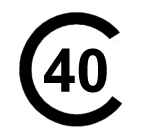
If you are a boat enthusiast looking to get more information on specs, built, make, etc. of different boats, then here is a complete review of CAL 40. Built by Jensen Marine/Cal Boats and designed by C. William Lapworth, the boat was first built in 1963. It has a hull type of Fin w/spade rudder and LOA is 11.99. Its sail area/displacement ratio 18.48. Its auxiliary power tank, manufactured by Perkins, runs on Diesel.
CAL 40 has retained its value as a result of superior building, a solid reputation, and a devoted owner base. Read on to find out more about CAL 40 and decide if it is a fit for your boating needs.
Boat Information
Boat specifications, sail boat calculation, rig and sail specs, auxillary power tank, contributions, who designed the cal 40.
CAL 40 was designed by C. William Lapworth.
Who builds CAL 40?
CAL 40 is built by Jensen Marine/Cal Boats.
When was CAL 40 first built?
CAL 40 was first built in 1963.
How long is CAL 40?
CAL 40 is 9.24 m in length.
What is mast height on CAL 40?
CAL 40 has a mast height of 12.19 m.
Member Boats at HarborMoor

Documenting the Full Restoration of a Cal 40
- Post author: BMC
- Post published: August 21, 2015
- Post category: Boat Refit / Sail Boat / Yacht Racing
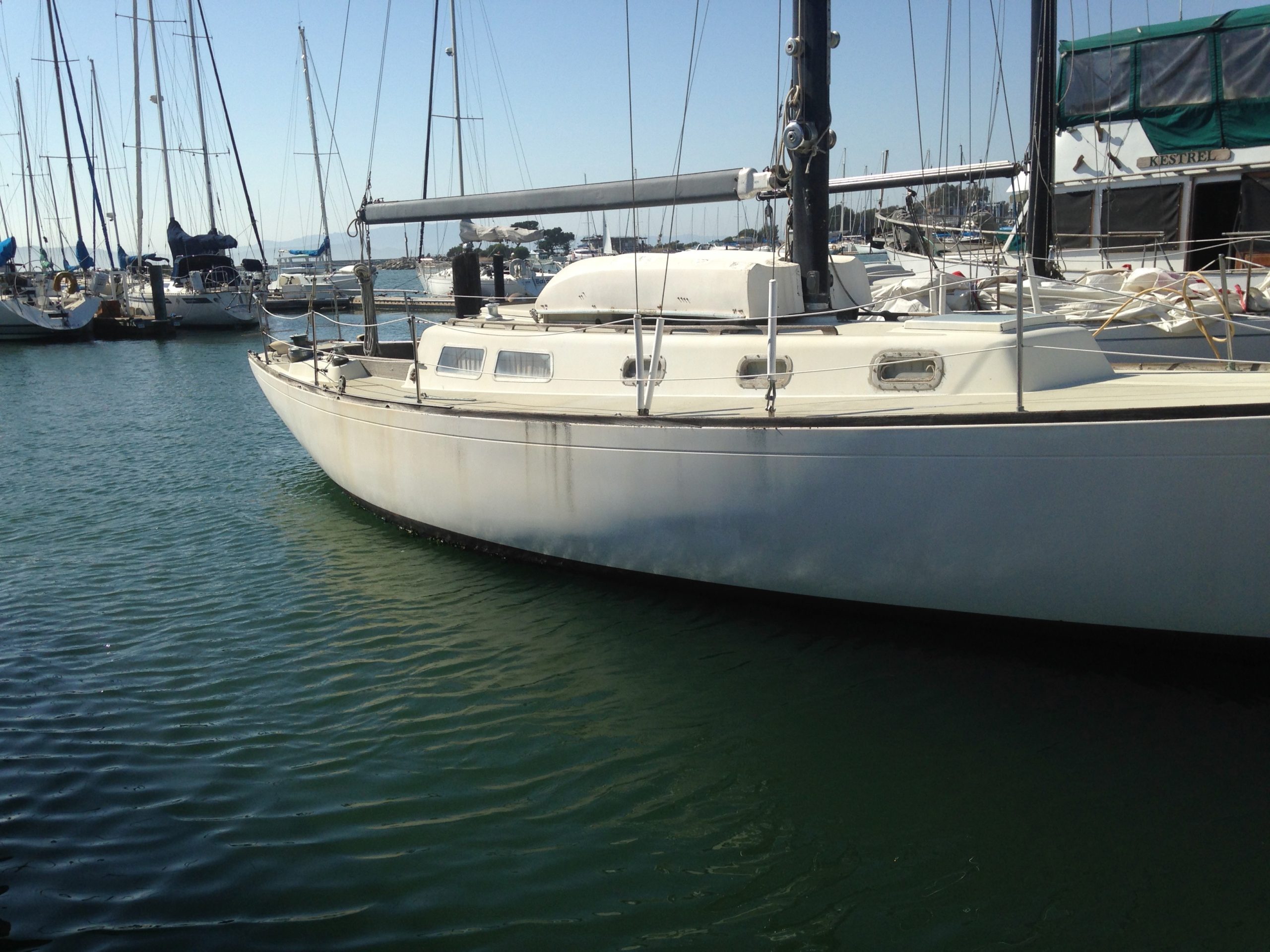
The boat yard has always been a place where sailors with a dream have started on projects to fulfill their dream. Fred Cook of Schaefer Marine is one of those sailors, and the complete restoration of a Cal 40 is his latest dream project.
Fred is no newcomer to the marine industry, and to boat restoration. As president of Schaefer Marine, he oversees operation of one of the most trusted names in marine hardware. But this is a personal project for Fred, his seventh restoration, and one of his most ambitious.
Fortunately for the sailing community, Fred is doing a fantastic job of documenting the progress of the restoration with videos in several episodes posted on YouTube, and embedded on this page.
Segment 1: Who can resist a FREE Cal 40?
Segment 2: initial assessment, segment 3: review of the sails that came with the boat, segment 4: what the marine survey uncovered, segment 5: what mast should we consider, segment 6: naval architect - new plans for an old boat, segment 7: upside down boat.
We hope you enjoyed this project. There are a few more segments on the Schaeffer Marine YouTube Channel . Have fun!
Please Share This Share this content
- Opens in a new window
You Might Also Like
Signs of the america’s cup, video of rapid transit’s transpac.
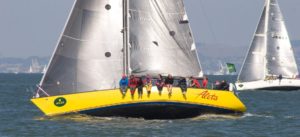
Aleta lives on

IMAGES
VIDEO
COMMENTS
Sailboat Reviews; Sailboats 36-40ft; Cal 40 Though now an old and dated design, the Cal 40 was a hot boat when new, and she carries that legacy. By. ... The Cal 40, a hot racing boat when new, carries that legacy with her into maturity. Generally, the boats have been raced hard, some cruised hard as well.Owners have tended to be the type to add ...
The Classic 1960s Ocean Racing Legend. The Cal 40 is a roughly 39-ft 4-in fiberglass production racing and cruising sailboat, of which about 155 were built in Costa Mesa, California, starting in 1963. The first mass-produced sailboat that was capable of sustained surfing on waves, the Cal 40 dominated ocean racing during the 1960s like no other design before or since.
The Cal 40 Used Boat Review. There may be no more than a handful of sailboats in recent history that can be called milestones in that they significantly influenced the way in which boats were designed, built and sailed. Without a doubt, the Cal 40 is one design that fits this elite group. Introduced in 1963, the Cal 40 was so successful ...
The rig dimensions above are from the 1963 sail plan drawing. Current class rules (2005) allow a max of: I - 46.7'. J - 15.3'. P - 40.1'. E - 17.55'. The accolades for this particular boat are many. Certainly one of the most influential designs and successful racing boats ever. With 160 built, it was also a commercial success for Jensen Marine.
The Cal 40 Dancing Bear is a fine example of a design that's reached cult status with offshore sailors since its debut in 1963. Herb McCormick. You never forget your best day of sailing. Mine came in the waning miles of the 2005 Transpac Race from Los Angeles to Honolulu, screeching down the Molokai Channel under spinnaker toward Diamond Head in 30 knots of pumping trade-wind breeze, hanging ...
The Cal 40's sail plan is moderate, with a medium-aspect mainsail, single-spreader mast and relatively long boom. The rigging is simple, with three shrouds on each side, a forestay, and a backstay. Hand-laid fiberglass and polyester resin were used in the hull construction. Some owners have reinforced the attachment points of wooden bulkheads ...
The first Cal 40s were introduced in 1963, but they were really making an impact by 1964 and by 1967 the 40 was the most dominating production ocean racer ever built. In the 1966 Bermuda-Newport Race, 40s won five of the top 15 places overall. Cal 40s won the Transpac race in 1965, 1966 and 1967, and again in 1985, also winning the SORC in 1964 ...
As Bizzy recalled, Illusion was the first of three well-known Cal 40s that appeared on Long Island Sound sometime after 1965. One was Thunderbird, sail #1473 owned by the chief executive of IBM, Vincent Learson, who went on to do Bermuda Races with a bigger boat, Nepenthe.Another Cal 40 was campaigned by a Greenwich sailing family, the Lovelaces. ...
Of course, when the Cal 40 was first launched in 1963 there were many naysayers, who couldn't believe that such a light boat could be engineered to withstand the rigours of the ocean. Yet the design won the 1965, 67 and 69 TransPac races, having sailed 2,250 miles from Los Angeles to Hawaii.
Stan Honey nominates the Cal40. The Cal40 has iconic status in the United States and was a game-changer in the 1960s as a true racer/cruiser. Designed by Bill Lapworth, it has a radical flat ...
Cal 40 is a 39′ 4″ / 12 m monohull sailboat designed by C. William Lapworth and built by Jensen Marine/Cal Boats between 1963 and 1971. ... Sail area in square feet, derived by adding the mainsail area to 100% of the foretriangle area (the lateral area above the deck between the mast and the forestay). D: ...
The Cal 40 is an American sailboat that was designed by Bill Lapworth as an offshore racer and first built in 1963. The boat became an acclaimed racer and was also a commercial success. ... In a 2020 review Tom Burden wrote, "today the Cal 40 has attained true 'cult' status as a design that is sought after, restored and passed down through ...
Our editorial staff selected 7 bluewater cruising sailboats from 26 to 42 feet, from all over the world. Bluewater sailing is a type of ocean cruising: it refers to long-term open sea cruising, for example, passages (ocean crossings). Bluewater sailing implies a lack of support and requires a certain amount of self-sufficiency, since you're ...
Marketplace. As of February 2021, there are currently nine Caliber 40s on the market with prices ranging from $99,000 to $250,000.00. The large price differential is mostly due to the wide age as the 40-footer was produced for at least 14 years. About the Author: Capt. Tarn Kelsey owns and operates Kelsey Marine Survey in Annapolis, Maryland on ...
Base price seems a fair $204,950, FOB Clearwater, Florida. For comparison, a Cabo Rico 40 is close to $400,000, a Catalina 40 Mk II and a Jeanneau Sun Fast 40 about $170,000, and the C&C 121 Express about $220,000. Contact- Caliber Yachts, 4551 107th Circle N., Clearwater, FL 33762; 813/573-0627. Darrell Nicholson.
The Cal 40 is a 39'4" fiberglass production racing and cruising sailboat. Abou... #cal40 #retroboat #sailinganarchyIn this video we check out a Cal 40 sailboat.
Caliber 21,000 lbs vrs Sabre 19,500 lbs. Sabre a little beamier by 6 inches. Sail area of the Caliber ( 100%)= 729 Sail area of the Sabre (100%) = 810, 12% more. Sabre 402 was sailing Cruiser of the year 1997. In terms of the liveaboard space it all depends what you seek. Both are great setups.
CAL 40 Detailed Review. 1 of 3. If you are a boat enthusiast looking to get more information on specs, built, make, etc. of different boats, then here is a complete review of CAL 40. Built by Jensen Marine/Cal Boats and designed by C. William Lapworth, the boat was first built in 1963. It has a hull type of Fin w/spade rudder and LOA is 11.99.
Documenting the Full Restoration of a Cal 40. BMC. August 21, 2015. Boat Refit / Sail Boat / Yacht Racing. The boat yard has always been a place where sailors with a dream have started on projects to fulfill their dream. Fred Cook of Schaefer Marine is one of those sailors, and the complete restoration of a Cal 40 is his latest dream project.
Contact Information. Cal40.com. [email protected]. 99 S. Lake Avenue. Pasadena, CA 91101. (626) 243-4145. Welcome to the Cal40 Website, highlighting the very best of the Cal40 boats.
A glance at recent classified ads for "loaded" 1995 and 1996 Caliber 40LRCs (sloops with Caliber's Convertible Cutter Rigs) launched in the past two years reveals prices consistently between $220,000 and $225,000. The base price for the origi-nal 40 was $154,000 in 1994.
The Caliber 40 has a fully encapsulated, elongated fin keel that has an iron and concrete ballast of 9,500 pounds. Her ballast to displacement ratio is a very respectable 44% which is good to find on a boat intended for bluewater use. The rudder is skeg hung for protection and tracking and her waterline is just over 32 feet.
Used Caliber 40 LRCs currently on the market range from a 1996 model offered at $194,900 to a 2003 model offered at $249,900. Reported sales over the last six months range from $143,000 for a 1993 model to $265,000 for a 2007 model. There are plenty of less expensive used boats in this size and age range, but there may be no less expensive ...